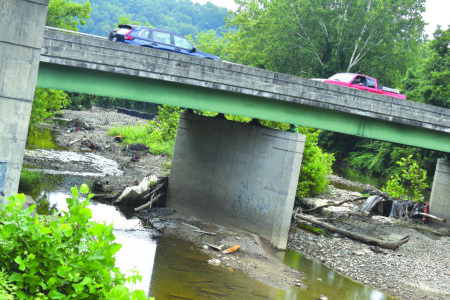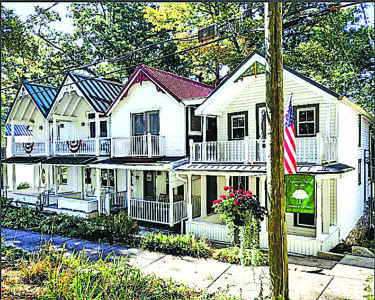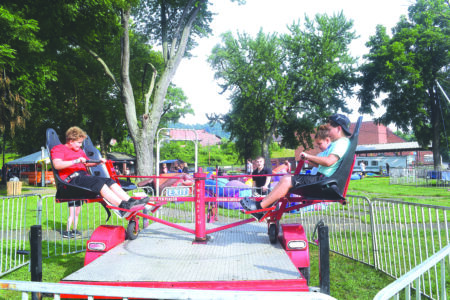Ohio River Valley Institute looks to OSU report, says diversify local economy
A PANEL representing members of the Ohio River Valley Institute research group and Ohio State University met via Zoom on Wednesday to discuss a recent report on a Washington state community’s investment in local industry and ways that southeastern Ohio communities might adopt and apply those practices.
Present was Mark Partridge, chairman of the C. William Swank Program in Rural-Urban Policy at Ohio State University, co-author of the report: “A Bigger Bang Approach to Economic Development: An Application to Rural Appalachian Ohio Energy Boomtowns.”
Wendy Patton, director of the Columbus Program of State Issues at Penn State University and a research fellow at the ORVI, said there is a difference between “economic growth,” which could be subject to the “boom and bust” cycle of communities dependent on natural resources and manufacturing, and “economic development,” which involves investing in infrastructure and diversification of local economies for long-term and sustained improvements. She said the Appalachian counties have dealt with the “natural resource curse,” and while it seemed hydraulic fracking promised a new economic boom, there has not been sustained prosperity and employment.
“There was an element of boom and bust from the start. Oil and gas drilling jobs are like construction in that the work tends to be temporary and, often in this industry, staffed by crews of workers from outside who travel from one site to the next,” she said.
The report looks to the community of Centralia in Lewis County, Washington, which faced an economic downturn with the decline of coal mining and in 2016 used $55 million in grant funding to invest in local infrastructure.
Report co-author Nick Messenger, doctoral candidate of agricultural environmental and development economics at OSU and research associate with the Swank Program and senior research fellow with the ORVI, said the categories were energy efficiency and weatherization, economic and community development, and “clean energy” technology investments. He said Centralia began to exceed the country in job growth and weekly wages.
“You don’t just recruit a company to come into a community and create 100 new jobs, but you can make investments that make a community a desirable place to live,” Messenger said. “There are things people like living near and pay more to live near that can revitalize communities.”
He said there are many areas that are attractive sites for hydrogen hubs. He mentioned other possible endeavors.
“Things like installing electric vehicle charging stations along scenic highway routes through the region. Things like retrofitting and running electric buses throughout the region,” he cited as ways to attract people.
Partridge elaborated on how the report was organized and said the area of Centralia has similarities to the Appalachian region of Ohio, including a rural tradition and dependence on natural resources, but while Centralia moved away from coal and other natural resources, Appalachia has “doubled down” and the boom and bust cycle has not served the region well.
“The current approach has not worked very well,” he said, adding there is an advantage to smaller businesses where people are employed and spending money locally.
“One of the things that have to happen to turn around a rural place, is attitudes have got to change,” Partridge said. “If people think the place is going to go downhill, they’re going to disinvest. They’re going to move away. They’re going to close their business. Outsiders won’t invest. So you have to turn around that psychology.”
He said energy efficiency has also helped to increase property values, and small business income has increased. He said as a control group, the study also created a synthetic computer model of a similar community to Centralia that did not start the program to compare with Centralia’s progress.
Messenger said using federal dollars in such programs is a better investment than policies of tax abatements and subsidies to recruit new incoming companies.
“That can create some distorted incentives in the market. A company can now locate somewhere and benefit from large tax abatements or these types of subsidy policies,” he said. “Conditions change in that economy or that industry, there’s a bust where there was a boom, and suddenly the jobs that were created are also temporary.”
Sean O’Leary, senior researcher on energy and petrochemicals with the ORVI, agreed. He referred to a long-discussed plan by Thailand-based PTT Global Chemical America to build an ethane cracker plant at Dilles Bottom along Ohio 7. The potential project has suffered several delays due to the COVID-19 pandemic and a partner dropping out of the deal.
“For a decade now, Belmont County has been hanging its economic hopes on the construction of the PTT ethane cracker plant, hoping that would be the engine for economic revival,” he said. “That cracker is never going to be built.”
PTTGCA maintains that it remains committed to the project and is still searching for a new partner.
Partridge said Centralia is also culturally similar to the Appalachian area.
“The difference being with the west that the federal government came in. Coal they let go on a little bit longer, but timber in the west was really being shut down for a variety of environmental reasons,” he said, adding it was for the best, despite reactions at the time. “It destroyed those jobs, most of them, however it set up an entirely new set of jobs that have led to much more prosperity.”
The report can be read in summary or in full at ohiorivervalleyinstitute.org.





